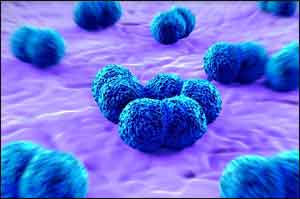- Home
- Editorial
- News
- Practice Guidelines
- Anesthesiology Guidelines
- Cancer Guidelines
- Cardiac Sciences Guidelines
- Critical Care Guidelines
- Dentistry Guidelines
- Dermatology Guidelines
- Diabetes and Endo Guidelines
- Diagnostics Guidelines
- ENT Guidelines
- Featured Practice Guidelines
- Gastroenterology Guidelines
- Geriatrics Guidelines
- Medicine Guidelines
- Nephrology Guidelines
- Neurosciences Guidelines
- Obs and Gynae Guidelines
- Ophthalmology Guidelines
- Orthopaedics Guidelines
- Paediatrics Guidelines
- Psychiatry Guidelines
- Pulmonology Guidelines
- Radiology Guidelines
- Surgery Guidelines
- Urology Guidelines
Neonatal Meningitis with Unusual Bug?

Neonatal meningitis remains a life threatening invasive infection that needs a comprehensive approach. Early diagnosis and institution of appropriate empiric antibiotic therapy will be life-saving and decrease complications. This is report the case of a fifteen day-old boy presenting for sepsis evaluation with one day history of high grade fever, irritability and poor feeding. Sepsis work up revealed meningitis secondary to Moraxella catarrhalis.
Moraxella catarrhalis is a gram negative bacteria that is rarely reported in late onset neonatal sepsis, and we will review the latest literature on neonatal meningitis secondary to M. catarrhalis.
Neonates with bacterial meningitis, however, usually present with subtle, variable, or non-specific features. These features might include fever, hypothermia, lethargy, poor feeding, irritability, vomiting, diarrhea, respiratory distress, seizures, or bulging fontanelles. Cerebrospinal fluid (CSF) examination is essential to establish the diagnosis of bacterial meningitis and to identify the causative organism and undertake in vitro antibiotic susceptibility testing. CSF culture is the gold standard for diagnosis of meningitis [1]. Characteristic CSF findings for acute bacterial meningitis are polymorphonuclear pleocytosis, hypo-glycorrhachia, and increased protein concentrations, but similar CSF findings can be demonstrated for neonates with intra-ventricular hemorrhage. The use of standard or sequential-multiplex polymerase chain reaction has been useful in identification of infecting bacteria. Detection of bacterial nucleic acid in CSF is most promising if Gram stain and culture of CSF results are negative because of preceding antibiotic therapy [1].

Disclaimer: This site is primarily intended for healthcare professionals. Any content/information on this website does not replace the advice of medical and/or health professionals and should not be construed as medical/diagnostic advice/endorsement or prescription. Use of this site is subject to our terms of use, privacy policy, advertisement policy. © 2020 Minerva Medical Treatment Pvt Ltd